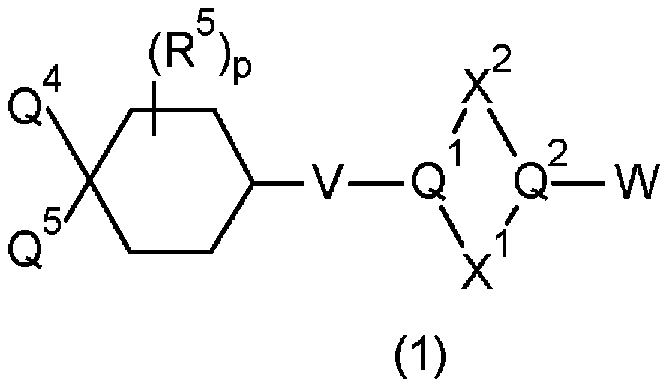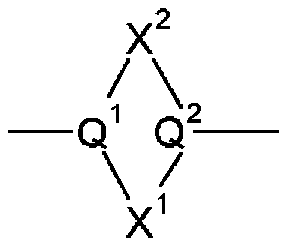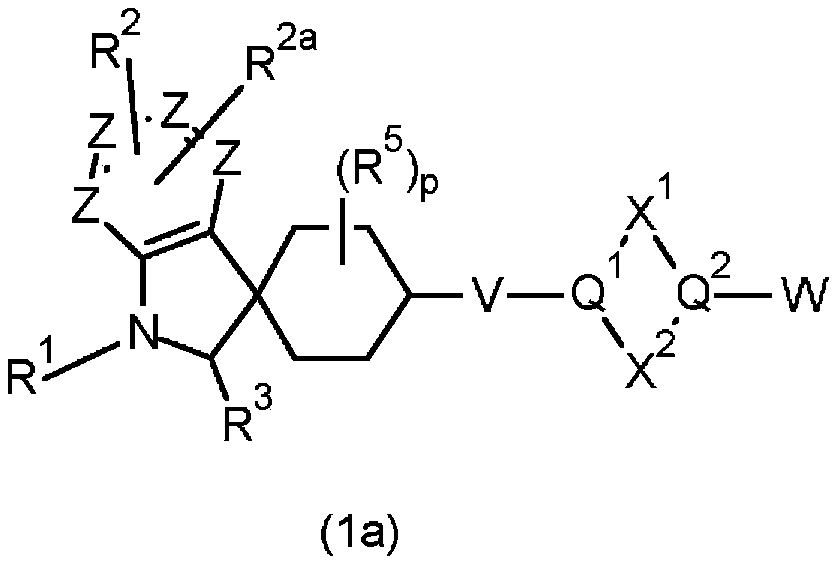Heterocyclic compounds having activity as modulators of muscarinic M1 and/or M4 receptors in treatment of CNS diseases and pains
A technology of compounds and chemical bonds, applied in the fields of organic active ingredients, organic chemistry, nervous system diseases, etc.
- Summary
- Abstract
- Description
- Claims
- Application Information
AI Technical Summary
Problems solved by technology
Method used
Image
Examples
Embodiment 1-1 to 25-1
[0588] The compounds of Examples 1-1 to 25-1 shown in Table 1 below have been prepared. Starting materials and intermediates are described in Table 2. The NMR and LCMS properties of the compounds of Examples 1-1 to 25-1 and the methods used to prepare them are listed in Table 3.
[0589] Table 1
[0590]
[0591]
[0592]
[0593]
[0594]
[0595]
[0596]
[0597] general method
[0598] Where preparative routes are not included, relevant intermediates are commercially available. Commercial reagents were used without further purification. Room temperature (rt) means about 20-27°C. 1 H NMR spectra were recorded at 400 MHz by Bruker or Jeol instruments. Chemical shift values are expressed in parts per million (ppm) or (δ)-values. The following abbreviations are used for various NMR signals: s = singlet, br = broad, d = doublet, t = triplet, q = quartet, quint = quintet, td = triplet of doublets, tt = triplet Triplet, qd = quadruple doublet, ddd ...
preparation Embodiment 3-19
[0870] To prepare Example 3-19 that is 4-[4-(5-methoxypyridin-2-yl)-4-cyanocyclohexyl]-1,4-diazacyclic Typical procedure for the preparation of cyclohexane via intermediate 32 and intermediate 44, exemplified by ethyl heptane-1-carboxylate
[0871]
[0872] Make 1-(5-methoxypyridin-2-yl)-4-oxocyclohexanecarbonitrile (0.20 g, 0.87 mmol) and ethyl 1,4-diazepane-1-carboxylate Hydrochloride (0.18 g, 1.01 mmol) was dissolved in DCM (20 mL), and MeOH (2 mL) and acetic acid (5 drops) were added. The reaction mixture was stirred at room temperature for 4 h, then cooled to 0 °C. STAB (0.73 g, 3.47 mmol) was added in portions and the reaction mixture was stirred at room temperature overnight. Add NaHCO 3 (saturated solution, 40 mL), and the reaction mixture was stirred at room temperature for 1 h, then extracted with DCM (4 x 40 mL). The organic layers were combined and dried (MgSO 4 ). The solvent was removed in vacuo and separated by column chromatography (normal phase, [B...
preparation Embodiment 1-15
[0875] With Preparation Example 1-15, {(3S)-1-[trans-4-(5-chloropyridin-2-yl)-4-cyanocyclohexyl]pyrrole Alk-3-yl}carbamate as an example for the preparation of substituted cyclohexyl derivatives via intermediates 15 and 28 typical process
[0876]
[0877] (3S)-Pyrrolidin-3-ylcarbamate tert-butyl ester (0.75 mL, 2.0 mmol) and 1-(5-chloropyridin-2-yl)-4-oxocyclohexanecarbonitrile (0.83 mL, 2.2 mmol) was dissolved in DCM (7.5 mL), and acetic acid was added (5-10 drops). The reaction mixture was stirred at room temperature for 4 h, then cooled to 0 °C. STAB (0.64 g, 3.0 mmol) was added in portions and the reaction mixture was stirred at room temperature overnight. Add NaHCO 3 (saturated solution, 30 mL), and the reaction mixture was stirred at room temperature for 1 h, then extracted with DCM (4×30 mL), and the organic layers were combined and dried (MgSO 4 ). The solvent was removed in vacuo to give crude tert-butyl {(3S)-1-[4-(5-chloropyridin-2-yl)-4-cyanocyclohexy...
PUM
 Login to View More
Login to View More Abstract
Description
Claims
Application Information
 Login to View More
Login to View More - R&D Engineer
- R&D Manager
- IP Professional
- Industry Leading Data Capabilities
- Powerful AI technology
- Patent DNA Extraction
Browse by: Latest US Patents, China's latest patents, Technical Efficacy Thesaurus, Application Domain, Technology Topic, Popular Technical Reports.
© 2024 PatSnap. All rights reserved.Legal|Privacy policy|Modern Slavery Act Transparency Statement|Sitemap|About US| Contact US: help@patsnap.com










